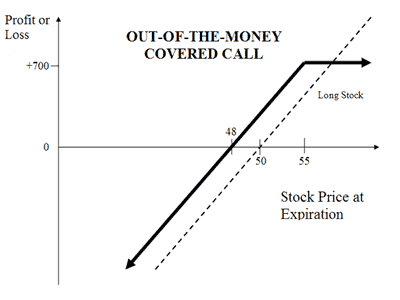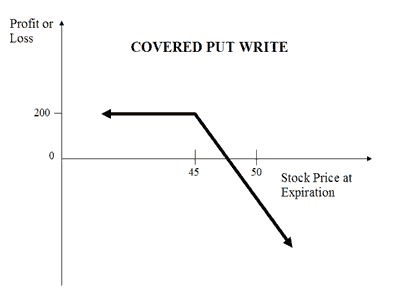 Zerodha (Trading Account)
Zerodha (Trading Account)
FREE Equity Delivery and MF
Flat ₹20/trade Intra-day/F&O
 Zerodha (Trading Account)
Zerodha (Trading Account)
FREE Equity Delivery and MF
Flat ₹20/trade Intra-day/F&O

|
|
Compare Covered Call and Covered Put (Married Put) options trading strategies. Find similarities and differences between Covered Call and Covered Put (Married Put) strategies. Find the best options trading strategy for your trading needs.
| Covered Call | Covered Put (Married Put) | |
|---|---|---|
 |
 |
|
| About Strategy | A Covered Call is a basic option trading strategy frequently used by traders to protect their huge share holdings. It is a strategy in which you own shares of a company and Sell OTM Call Option of the company in similar proportion. The Call Option would not get exercised unless the stock price increases. Till then you will earn the Premium. This a unlimited risk and limited reward strategy. Let's assume you own TCS Shares and your view is that its price will rise in the near future. You will Sell OTM Call Option of TCS at a price, where you target to sell your shares. You will receive premium amount for selling the Call option and the premium is your income. | The Covered Put is a neutral to bearish market view and expects the price of the underlying to remain range bound or go down. In this strategy, while shorting shares (or futures), you also sell a Put Option (ATM or slight OTM) to cover for any unexpected rise in the price of the shares. This strategy is also known as Married Put strategy or writing covered put strategy. The risk is unlimited while the reward is limited in this strategy. How to use a Protective Call trading strategy? The usual Covered Put looks like as below for State Bank of India (SBI) Shares which are currently traded at Rs 275 (SBI Spot Price): Covered Put Orders - SBI Stock OrdersSBI Strike Price Sell Underlying SharesSell 100 SBI Shares ... Read More |
| Market View | Bullish | Bearish |
| Strategy Level | Advance | Advance |
| Options Type | Call + Underlying | Put + Underlying |
| Number of Positions | 2 | 2 |
| Risk Profile | Unlimited | Unlimited |
| Reward Profile | Limited | Limited |
| Breakeven Point | Purchase Price of Underlying- Premium Recieved | Futures Price + Premium Received |
| Covered Call | Covered Put (Married Put) | |
|---|---|---|
| When to use? | The covered call option strategy works well when you have a mildly Bullish market view and you expect the price of your holdings to moderately rise in future. |
The Covered Put works well when the market is moderately Bearish |
| Market View | Bullish When you are expecting a moderate rise in the price of the underlying or less volatility. |
Bearish When you are expecting a moderate drop in the price and volatility of the underlying. |
| Action |
Let's assume you own TCS Shares and your view is that its price will rise in the near future. You will Sell OTM Call Option of TCS at a price, where you target to sell your shares. You will receive premium amount for selling the Call option and the premium is your income. |
Sell Underlying Sell OTM Put Option Suppose SBI is trading at 300. You believe that the price will remain range bound or mildly drop. The covered put allows you to benefit from this market view. In this strategy, you sell the underlying and also sell a Put Option of the underlying and receive the premium. You will benefit from drop in prices of SBI, the Put Option will minimize your risks. If there is no change in price then you keep the premium received as profit. |
| Breakeven Point | Purchase Price of Underlying- Premium Recieved |
Futures Price + Premium Received The break-even point is achieved when the price of the underlying is equal to the total of the sale price of underlying and premium received. |
| Covered Call | Covered Put (Married Put) | |
|---|---|---|
| Risks | Unlimited Maximum loss is unlimited and depends on by how much the price of the underlying falls. Loss happens when price of underlying goes below the purchase price of underlying. Loss = (Purchase Price of Underlying - Price of Underlying) + Premium Received |
Unlimited The Maximum Loss is Unlimited as the price of the underlying can theoretically go up to any extent. Loss = Price of Underlying - Sale Price of Underlying - Premium Received |
| Rewards | Limited You earn premium for selling a call. Maximum profit happens when purchase price of underlying moves above the strike price of Call Option. Max Profit= [Call Strike Price - Stock Price Paid] + Premium Received |
Limited The maximum profit is limited to the premiums received. The profit happens when the price of the underlying moves above strike price of Short Put. |
| Maximum Profit Scenario | Underlying rises to the level of the higher strike or above. |
Underlying goes down and Options exercised |
| Maximum Loss Scenario | Underlying below the premium received |
Underlying goes up and Options exercised |
| Covered Call | Covered Put (Married Put) | |
|---|---|---|
| Advantages | It helps you generate income from your holdings. Also allows you to benefit from 3 movements of your stocks: rise, sidewise and marginal fall. |
Its an income generation strategy in a neutral or Bearish market. Also allows you to benefit from fall in prices, range bound movements or mild increase. |
| Disadvantage | Unlimited risk for limited reward. |
The risks can be huge if the prices increases steeply. |
| Simillar Strategies | Bull Call Spread | Bear Put Spread, Bear Call Spread |

Add a public comment...

FREE Intraday Trading (Eq, F&O)
Flat ₹20 Per Trade in F&O
|
|